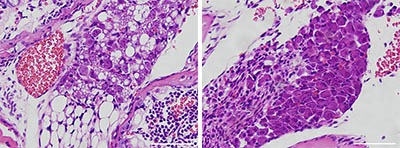Directed organelle movement is critical during cell division and differentiation. During cell division, a new cell-center is chosen, organelle volume doubles, and each type of organelle is accurately distributed to their proper location in the new daughter cells. Likewise during cellular differentiation, organelles move to new intracellular locations. This movement is essential for cells to acquire new functions. Defects in organelle movement have wide-ranging effects. For example defects in myosin Va based motility cause neurological diseases and defects in pigmentation, whereas defects in myosin Vb are linked to an inherited form of infant mortality.
Our lab studies yeast Myo2, a direct homologue of myosin Va and Vb. Major discoveries include our discovery of one of the first organelle-specific receptors. Analysis of the receptor showed that it is a direct target of a major cyclin-dpendent kinase, Cdk1. This is a key part of the mechanism that coordinates organelle inheritance with other cell-cycle processes, such as DNA replication. In addition we found that the spatially regulated destruction of the organelle-specific complex, is required to retain the organelle at its correct destination. Moreover, we have found a well-conserved Rab GTPase binding site on the myosin V cargo-binding domain.
We are focused on the following questions:
- What is the mechanism that underlies the spatially regulated degradation of organelle-specific complexes?
- How do Rab GTPases regulate cargo attachment to myosin V?
- Does cargo attachment require regulatory conformational changes in the cargo-binding domain of myosin V?
These questions are being pursued in yeast, yet our overall goal is to determine the mechanisms of cargo attachment to myosin V in higher eukaryotes.



